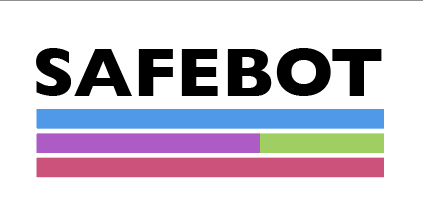Real-Time and Predictive Occupancy Mapping for Robotic Perception and Safe Path Planning
Brussel | More than two weeks ago
Enabling Safer, More Adaptable, and Efficient Robots for Industry and Society 5.0.
SAFEBOT Program Overview:
Collaborative robots, or cobots, promise to revolutionize the manufacturing floor, offering enhanced flexibility and enabling close-proximity to human-robot interactions. These cobots blend human adaptability with robotic efficiency, supporting evolving trends in mass customization and agile supply chains while alleviating repetitive tasks for workers. However, traditional industrial robots, due to their speed, outperform cobots in productivity. This disparity is largely rooted in safety concerns when robots operate near humans.
Guidelines like ISO/TS 15066 detail the safety protocols for cobots, including distinct operation modes. For example, the Speed and Separation Monitoring mode ensures a set distance between humans and robots, but this limits the robot's speed, affecting productivity. Similarly, Power and Force Limiting allows human-robot contact, but constraints on speed and payload to prevent injury affect its operational efficiency.
At SAFEBOT, our mission is to bridge this gap. We're pioneering an on-robot sensing and augmentation system that facilitates real-time adaptation. Whether it's assisting with conveyor system maintenance, welding alongside a human, or aiding in intricate surgeries, our technology aims to enhance cobots' environmental awareness. This ensures efficient task completion without compromising on production speed or safety, addressing the current challenges faced by industry cobots.

PhD Objectives:
Within the scope of the SAFEBOT project, we are currently developing multiple redundant sensor pipelines from various sensor modalities. These pipelines are designed to enrich the robot's perception of its surrounding environment.
The objectives for the PhD research are to first establish real-time occupancy maps for the robot. The purpose of these maps is to accurately distinguish between occupied and unoccupied spaces [1], [2]. Upon the successful generation and integration of these maps with the robot's sensor pipelines, the research will shift its focus to creating a predictive future occupancy map [3]. This advanced map will harness spatio-temporal learning techniques to anticipate future occupancy scenarios [4]. By doing so, it paves the way for its integration into state-of-the-art path planning algorithms, including RRT*, Fast Marching Tree, and Stable Sparse Trees (i.e. [5]–[7]) and our ERG constraint control schemes [9], [10]. Moreover, the occupancy maps and framework will become foundational in creating our proprietary Deep Reinforcement Learning (DRL) models [8], which will navigate paths that avoid occupied spaces by utilizing the temporal features of the predicted future occupancy maps.
Finally, a significant objective is to validate and benchmark the developed real-time and predictive occupancy mapping for robotic perception and safe path planning in compelling robotic demonstrators based on the Universal Robotics cobot or similar.
[1] L. Antao, J. Reis, and G. Goncalves, ‘Voxel-based Space Monitoring in Human-Robot Collaboration Environments’, in 2019 24th IEEE International Conference on Emerging Technologies and Factory Automation (ETFA), Zaragoza, Spain: IEEE, Sep. 2019, pp. 552–559. doi: 10.1109/ETFA.2019.8869240.
[2] ‘GPU-Voxels’. https://www.gpu-voxels.org/ (accessed Sep. 12, 2023).
[3] N. Anatoliotakis et al., ‘Dynamic Human–Robot Collision Risk Based on Octree Representation’, Machines, vol. 11, no. 8, Art. no. 8, Aug. 2023, doi: 10.3390/machines11080793.
[4] Khushdeep-singh, ‘ksm26/OccupancyGrid-Predictions’. Sep. 20, 2023. Accessed: Sep. 25, 2023. [Online]. Available: https://github.com/ksm26/OccupancyGrid-Predictions
[5] ‘Sensors | Free Full-Text | A Method on Dynamic Path Planning for Robotic Manipulator Autonomous Obstacle Avoidance Based on an Improved RRT Algorithm’. https://www.mdpi.com/1424-8220/18/2/571 (accessed Sep. 25, 2023).
[6] M. G. Tamizi, M. Yaghoubi, and H. Najjaran, ‘A review of recent trend in motion planning of industrial robots’, Int. J. Intell. Robot. Appl., vol. 7, no. 2, pp. 253–274, Jun. 2023, doi: 10.1007/s41315-023-00274-2.
[7] X. Xia et al., ‘Path Planning for Obstacle Avoidance of Robot Arm Based on Improved Potential Field Method’, Sensors, vol. 23, no. 7, Art. no. 7, Jan. 2023, doi: 10.3390/s23073754.
[8] T. Bhuiyan, L. Kästner, Y. Hu, B. Kutschank, and J. Lambrecht, ‘Deep-Reinforcement-Learning-Based Path Planning for Industrial Robots Using Distance Sensors as Observation’, in 2023 8th International Conference on Control and Robotics Engineering (ICCRE), Apr. 2023, pp. 204–210. doi: 10.1109/ICCRE57112.2023.10155608.
[9] K. Merckaert, B. Convens, C. Wu, A. Roncone, M. M. Nicotra, and B. Vanderborght, ‘Real-time motion control of robotic manipulators for safe human–robot coexistence’, Robot. Comput.-Integr. Manuf., vol. 73, p. 102223, Feb. 2022, doi: 10.1016/j.rcim.2021.102223.
[10] K. Merckaert, B. Convens, I. El Makrini, G. Van der Perre, M. M. Nicotra, and B. Vanderborght, ‘The Explicit Reference Governor for Real-time Safe Control of a Robotic Manipulator’, in 2020 IEEE/RSJ International Conference on Intelligent Robots and Systems (IROS 2020), IEEE, 2020. Accessed: Sep. 25, 2023. [Online]. Available: https://researchportal.vub.be/files/66007739/2020_IROS_Workshop_The_Explicit_Reference_Governor_for_Real_Time_Safe_Control_of_a_Robotic_Manipulator.pdf
Required background: Robotics and Automation Engineers, Computer Scientists, Mechatronics Engineers, Control Systems Engineers
Type of work: Software Engineering, Robotics Engineering, Deep Learning
Supervisor: Steven Latré
Co-supervisor: Bram Vanderborght
Daily advisor: Constantin Scholz
The reference code for this position is 2024-159. Mention this reference code on your application form.
